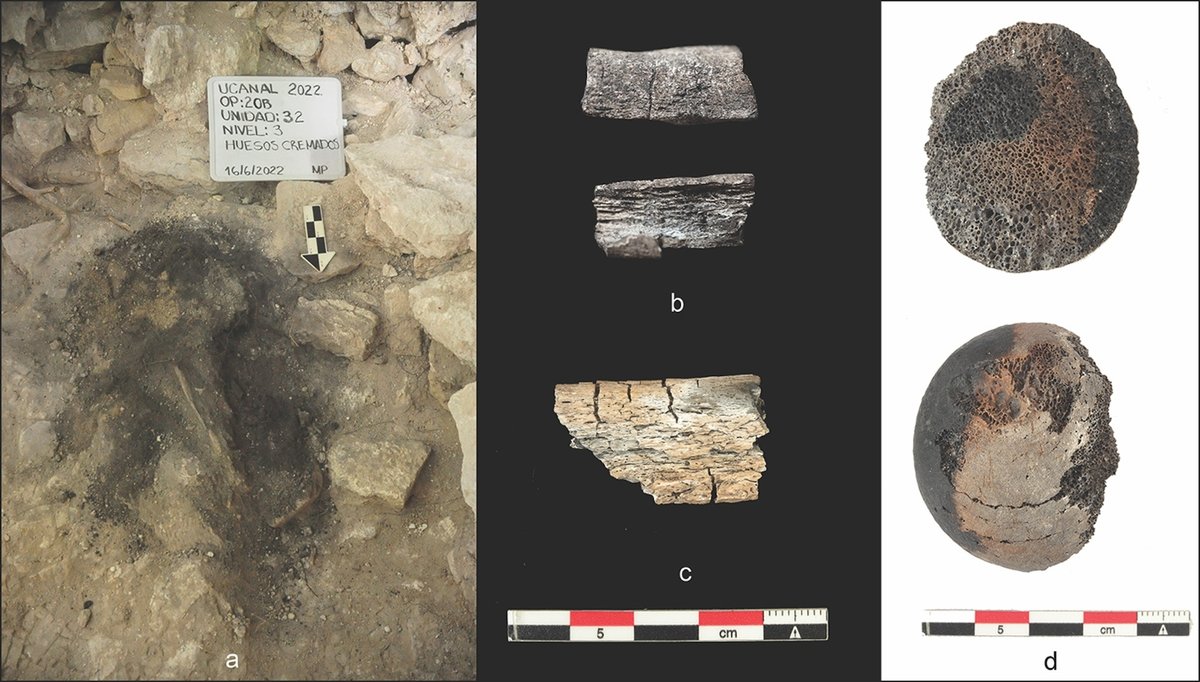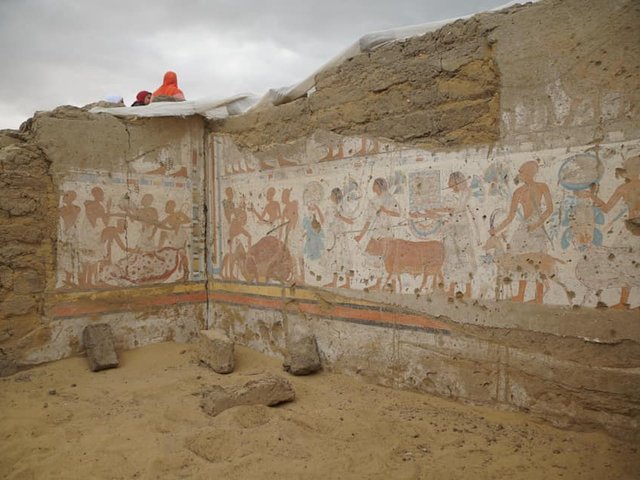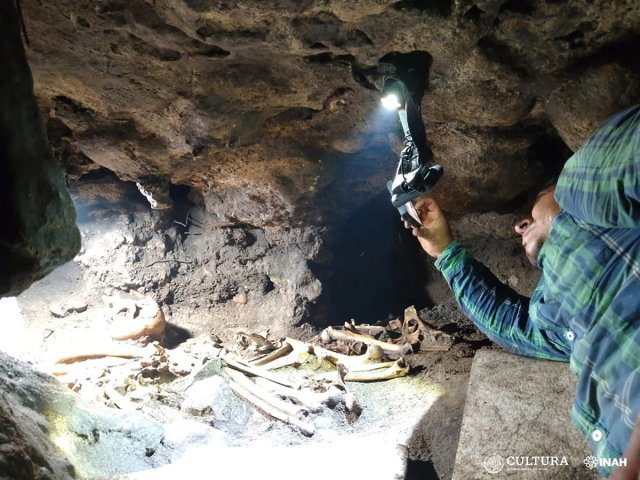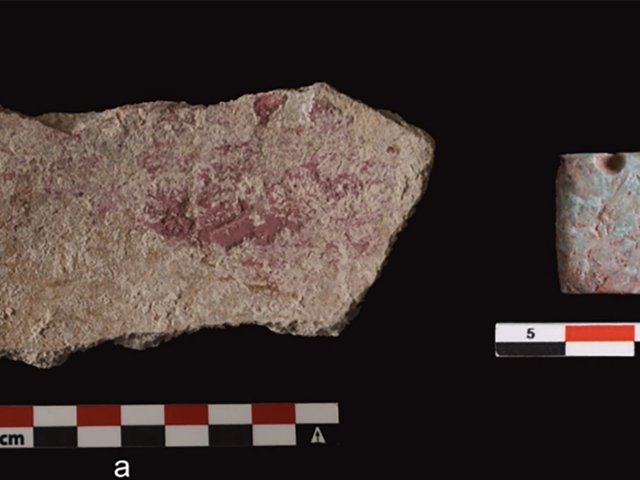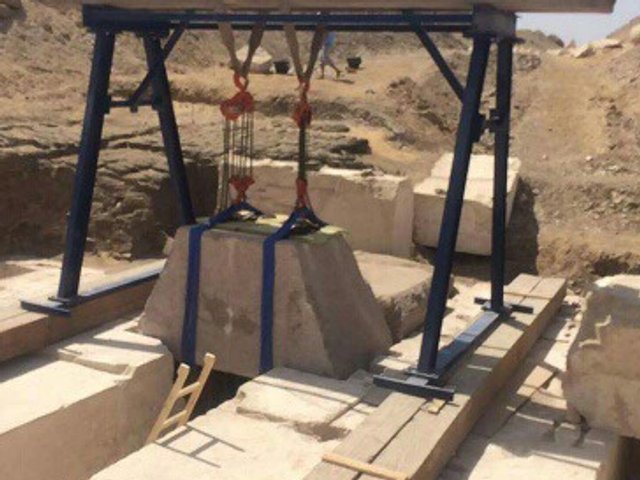Archaeologists working in Guatemala have discovered the burnt remains of Maya royalty in a temple-pyramid at Ucanal, a site 280km north-east of Guatemala City. Removed from a royal tomb, the bodies appear to have been ritually burnt as a display of political regime change.
“The finding of the burnt royal human remains was a total surprise,” says archaeologist Christina Halperin of the Université de Montréal in Canada, lead author of the research published in the journal Antiquity. “Although it would not be surprising to find a royal tomb within a temple pyramid, we were not expecting to find a thick deposit of fine soot, carbon, burnt bone, and thousands upon thousands of burnt, fire-cracked, and spalled ornaments.”
The team uncovered the remains and ornaments within the architectural fill of the temple-pyramid in 2022, where they had apparently been dumped beside a wall during an ancient phase of construction. Significantly, there was no sign of fire damage on the floor or blocks, showing that the bodies had been burnt elsewhere.
A study of the bones revealed that at least two adults had been burnt, though the remains of four were present, while among the ornaments were more than 10,000 marine shell beads and nearly 1,500 fragments of greenstone pendants, beads and other items. The team also found a piece of a greenstone diadem, typically worn by royalty, and the fragments of a greenstone mosaic mask, an object usually placed in royal tombs.
Although archaeologists had previously found evidence of people entering Maya royal tombs and ritually burning the bodies, this new discovery is different because the burnt remains were moved and ceremonially deposited in the temple-pyramid, Halperin explains. The team has not yet found the tomb in which the royal remains had originally been interred, and whether the bodies were burnt in public remains unclear, but likely.
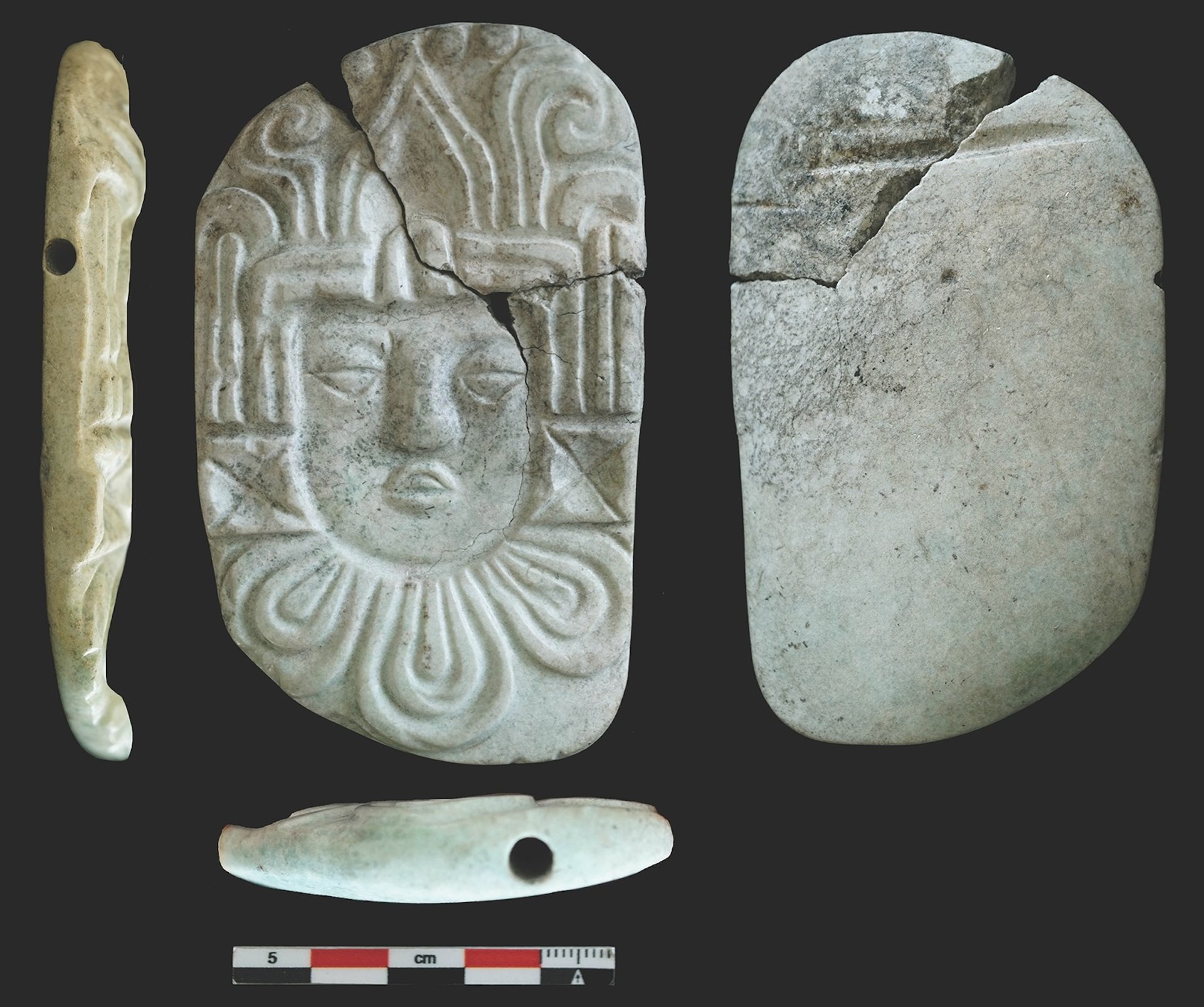
Carved pendant plaque of a human head from the burial Photograph by C. Halperin
“While we don’t know for sure if the royal remains were burnt in public, its deposition within the context of a ceremonial building in one of the major public plazas at the site of Ucanal suggests that the public was likely well aware of the events related to the removal of the contents of a royal tomb and their subsequent burning,” Halperin says.
From radiocarbon examination, the royal remains were burnt between 773CE and 881CE, some time after their deaths, during a period of great political change, when a man named Papmalil took power at Ucanal. It is possible that the ritual burning was an act of desecration against the earlier royal line, marking the end of their regime. It also represents a rare occasion when regime change can be seen so directly in the archaeological record.
“Our excavations elsewhere at the site of Ucanal indicate that this new rule was the beginning of substantial political, social and economic changes within the kingdom and in the Maya Lowlands in general,” Halperin says. “At the site, public works building projects were initiated, there was a slight increase in the residential population, and there was a reworking of political alliances and social values.”
Consequently, although these events occurred during the early years of the Terminal Classic period, normally a time of decline in Maya history, Ucanal appears to have thrived under Papmalil’s new regime.
“Although the beginning of the Terminal Classic period is often associated with the collapse of Classic Maya political systems, this discovery and the research we are doing in other parts of the site (households, water reservoirs and canals, ball courts, etc.) shows that even though some political systems may end, they can also be reworked and can lead to periods of prosperity,” Halperin says. “It is exciting to see moments of transition in Maya history that allow us to see beyond the well-known Classic period.”


